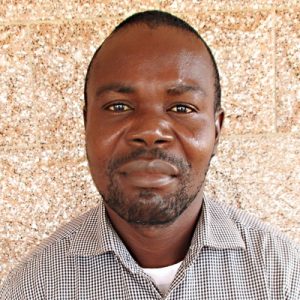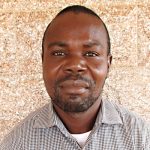Homes in this part of Lungi are built in straight lines on opposite sides of the only road that runs between Komkanda Memorial Secondary School and continues to other villages. The village is densely vegetated and very quiet because most of its dwellers spend a good part of their time on their farms. Komkanda Memorial Secondary School is located in a particularly rural area where there are no houses neighboring the school directly, except for the quarters for the school teachers.
The school started with two streams, junior secondary school one and two. Enrollment was 200 pupils, 114 boys and 86 girls. In 2007 the school's enrollment suddenly dropped because thieves ran off with the pump head for the school's well, exposing them to serious drawbacks in water, hygiene, and sanitation. But it was not an entirely bad year. Under the principalship of Mr. Abdul A. Koroma, the school attained the national standard. However, the school has yet to qualify for government assistance so parents have to pay school fees to attend.
Water remains a challenge. In fact, there is another well five meters from the back of the school building that suffered the same fate as the first school well. It had its pump head stolen a year ago. Students must walk to the primary school located a few hundred meters away to get water. But this means time is wasted when students leave the school grounds. To make matters worse, it adds stress onto a water point that is meant to serve the primary school and also serves nearby community members.
Waterborne sicknesses are common among children in this school since many have to use alternative sources for drinking. The bad thing is that this community is located some distance away from the nearest health center. People rely on street peddlers for their medication and most of these peddlers walk about with expired medicines which can be very dangerous for human consumption. That exposes community members to further illness and only adds to the financial drain caused by needing to treat the waterborne illnesses in the first place.
The children in this school come from homes where parents cannot even afford to give them lunch money. For most of them, water becomes a substitute for food. That means that any time there is not enough water, students are less likely to come to class.
One visible negative effect of their pump’s non-functionality is that the principal has converted the school’s handwashing stations into his own domestic water container. It is another way that the lack of availability of water compromises hygiene and sanitation in this school.
Here’s what we’re going to do about it:
Hygiene and Sanitation Training
There will be hygiene and sanitation training sessions offered for three days in a row.
No handwashing stations were observed here. After our visit, the hygiene and sanitation trainer decided it would be best to teach community members how to build a tippy tap (a hand-washing station built with a jerrycan, string, and sticks). They will use these tippy taps for handwashing demonstrations, and will also teach about other tools like dish racks and the importance of properly penning in animals.
These trainings will also strengthen the water user committee that manages and maintains this well. They enforce proper behavior and report to us whenever they need our help solving a serious problem, like a pump breakdown.
Well Rehabilitation
The well marked for this overhaul is dry for four months every year and needs major work to supply adequate, clean water to the community year round. The pump will be removed, and a hand auger will be lowered inside and powered by a drill team. This hand auger will allow the team to drill several meters deeper to hit a sufficient water column that will ensure the well supplies water throughout all seasons.
As the team drills, casing will be installed, transforming the bottom of this hand-dug well into a borehole. PVC piping will connect this lower system directly to the pump, a construction that we know will also improve the quality of water.
Once this plan is implemented, everyone within the community will have access to safe drinking water in both quality and quantity, even through the dry months.

 Borehole Well and Hand Pump
Borehole Well and Hand Pump
 Rehabilitation Project
Rehabilitation Project






























